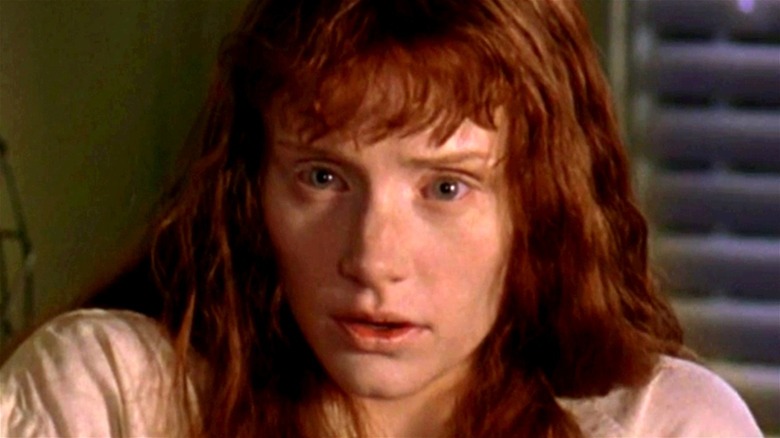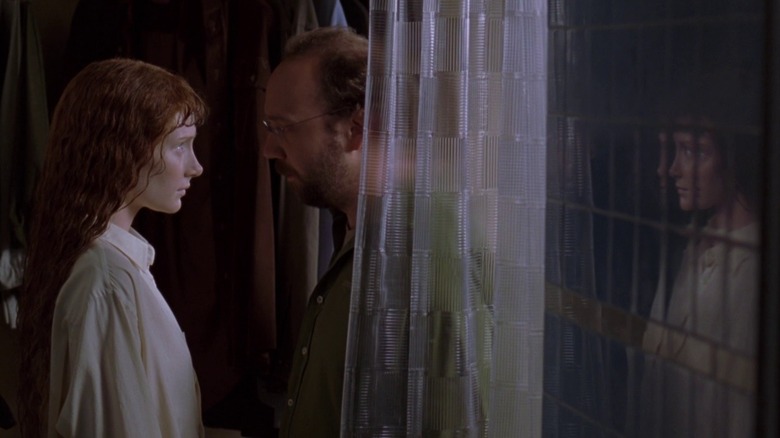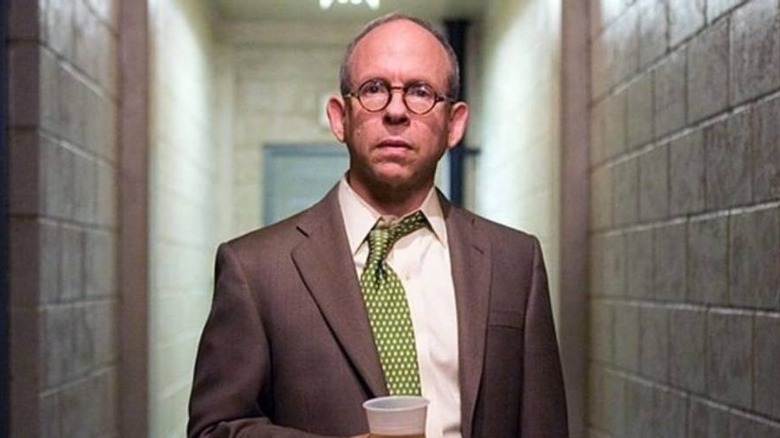The Ending Of Lady In The Water Explained
M. Night Shyamalan has had a notorious roller coaster ride through Hollywood. He started as a promising talent with "The Sixth Sense," wowing critics and audiences alike. He continued this trend with a couple more successes before things started taking a dip. Suddenly, his films were met with more disdain than acclaim, and it was during this period that Shyamalan came out with one of his most overlooked movies — "Lady in the Water."
The film follows an apartment complex super, Cleveland (Paul Giamatti), who discovers a young woman inside the complex's pool. He soon comes to realize that she's a water nymph, known as a Narf, who has come to connect with a man destined to write a book that will inspire a future leader of the United States. However, monstrous, wolf-like creatures are after her, and Cleveland, along with some of the other tenants of the building, must work together and realize what their roles in this story are in order to save Story (Bryce Dallas Howard).
It's a dense film, and with Shyamalan at the helm, you can be sure there are at least a couple of surprises sprinkled throughout the runtime. To fully appreciate what Shyamalan tried to accomplish with this movie, here's what to know about the ending of "Lady in the Water."
The twist: Everyone's roles were wrong
Shyamalan's movies are known for their big twists. In "The Sixth Sense," Bruce Willis's character was dead all along. In "Unbreakable," Samuel L. Jackson's character was behind all the tragedies, attempting to find a superpowered individual. A good twist should recontextualize what's come before, making you reconsider entirely what it is you've just witnessed. "Lady in the Water" has a twist of its own, but it's far more subtle than what you might have seen in his previous work.
Cleveland learns more about the Narf through children's stories, and he comes to realize that other people who live at the apartment complex have roles to play in this story, as well. The other apartment dwellers must lend helping hands to get Story home safely, and Cleveland mistakenly believes he's the Guardian of the story. He assigns other people their roles based on movie tropes, but during the first attempt to get Story to the Eagle, a Scrunt attacks. It's at this point Cleveland recognizes that he's not the Guardian. The team worked off mistaken beliefs, and it almost cost Story her life.
Through this twist, a central message of the movie comes across. People aren't always what they seem, and you shouldn't assume what people's identities are before you really get a chance to know them.
The meta-commentary on film critics
With the likes of "The Village" in 2004, Shyamalan already got a taste of what it was like to not always be the critical golden boy in Hollywood. Perhaps it should come as no surprise that for "Lady in the Water," he decided to set his sights on those same critics for his next movie. Harry Farber (Bob Balaban) is a film/book critic who moves into the apartment building and has a somewhat abrasive attitude. He also gives Cleveland the inaccurate information that led him to assign people the wrong roles.
The implication here seems to be that critics have no idea what they're talking about, and if you take their advice without any critical thinking, it can lead to false conclusions. To add further insult to injury, Harry meets a grisly end toward the movie's finale when he comes face-to-face with a Scrunt. In his final moments, he uses what movie knowledge he has to convince himself that this isn't the end of the line for him, only for him to be eaten shortly thereafter.
Shyamalan's attitude seems to be that understanding movie tropes doesn't make one an expert in life. Shyamalan cast himself as the writer destined to change the world to make the connections even more explicit. You can use a lot of words to describe "Lady in the Water," but "subtle" isn't one of them.


